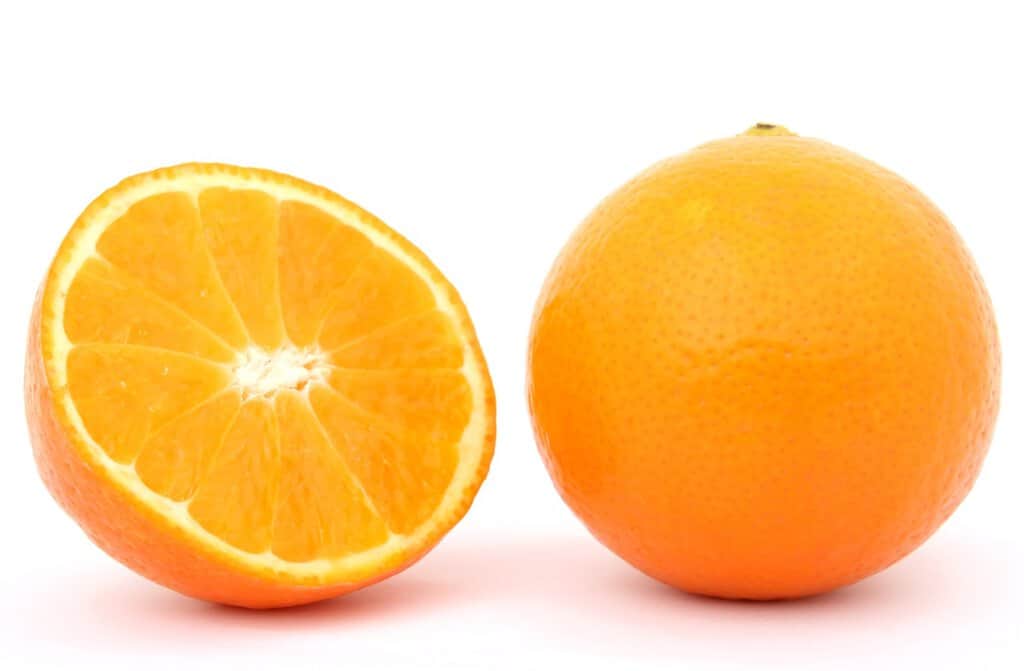Reloading during the game and at halftime with carbs, electrolytes, and fluids will not only get you through the rest of the game, but will help delay fatigue and with recovery, too. While ideal snack options include watermelon slices and fruit bars, many athletes may enjoy orange slices at halftime, too. However, the tradition of eating oranges during halftime has been banned on more than one field in recent years. From the reasoning behind the controversy to healthy options worth keeping in mind, here’s what you should know regarding the hot-button issue.
The roots of the tradition
According to Healthline, the nutritional value of an orange is vast — containing mainly carbs and water, very little protein and fat, and being relatively low in calories, the citrus fruit is well-known for being a good source of fiber. Oranges are also high in vitamin C and folate, though the fruit provides smaller amounts of other nutrients as well (including calcium, potassium, and thiamine (vitamin B1)). When it comes to sports, however, oranges play more of a role than one would think — according to one article from The Takeout, which explains the prominence of the fruit. For instance, the article points out that the NFL is actually required to provide three dozen oranges per game for halftime, while according to Florida Fruit Shippers, eating oranges has been a tradition since the 1950s.
Why the controversy?
From the long-standing tradition to the nutritional value that the snack has to offer, it’s not difficult to see why so many athletes enjoy the fruit while out on the field — until several Aussie fields began banning it at the advice of dentists, “who said the acid caused tooth decay,” according to The Takeout post. Healthline notes that while oranges can be packed with vitamin C, the acid content can actually erode enamel, thus making teeth more vulnerable to decay.
When looking to understand the reasoning behind the controversy of eating oranges at halftime, concerns can be found in dehydration and tooth enamel. “When you’re dehydrated, the level of saliva goes down considerably, so the concern is that saliva won’t actually be able to come through and repair the surface of the tooth,” notes dentist Dr. George Mandranis. According to Mandaranis, it’s all about how often athletes are consuming oranges while dehydrated. “If we’re doing this once a week, that’s not a big concern,” he says.
A variety of worthy alternatives
According to one 2019 post from the Daily Mail, the idea is “to replace oranges with lollies in order to give children a ‘sugar hit’ before they go back out and continue to compete.” For many, candy can seem like a rather unhealthy option, especially for those in the middle of a soccer game. For those who wish to skip out on the halftime orange tradition, there are plenty of worthy fruit alternatives out there. Bananas, for instance, are just one low-acid option that happens to be rich in nutrients like carbs and protein, with Healthline noting that bananas are also easy to digest and can slow the absorption of sugar in the bloodstream.
Dragon fruit is another option worth considering when looking to replace oranges. With a high water content yet a slightly acidic to neutral in regard to the pH scale. Not only that, but this tropical fruit can be grown at home (with plenty of patience), making it a great project for athletes who wish to have fresh fruit on demand in the long run. Growing dragon fruit from a cutting (from a healthy dragon fruit plant) is one way to start a journey of growing your own tropical fruit right at home. With the right care and conditions (which involves plenty of sunlight and moisture), the plant will start to bear fruit after a couple of years.
Eating oranges at halftime has been a longstanding tradition for many athletes. For soccer players who wish to avoid the fruit due to the recent controversy regarding oral health, however, there are plenty of fruits out there that will make for an equally healthy snack.

